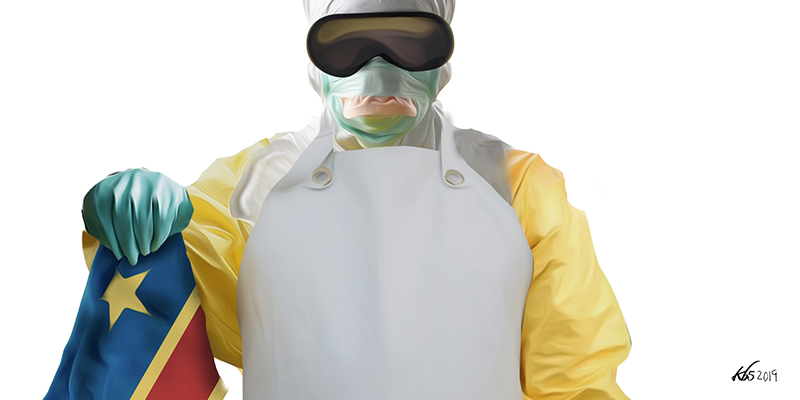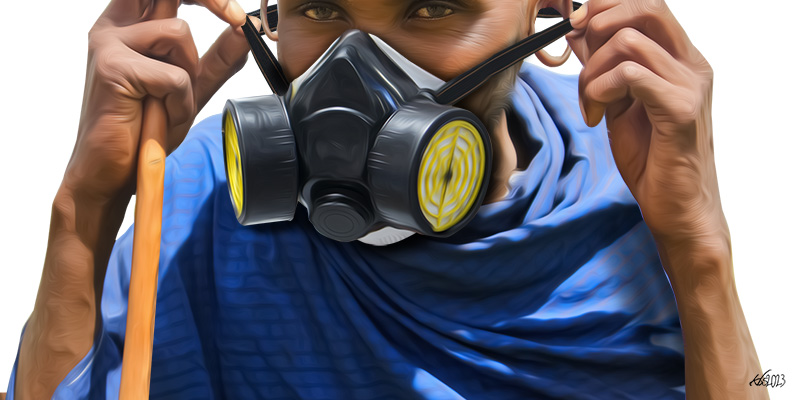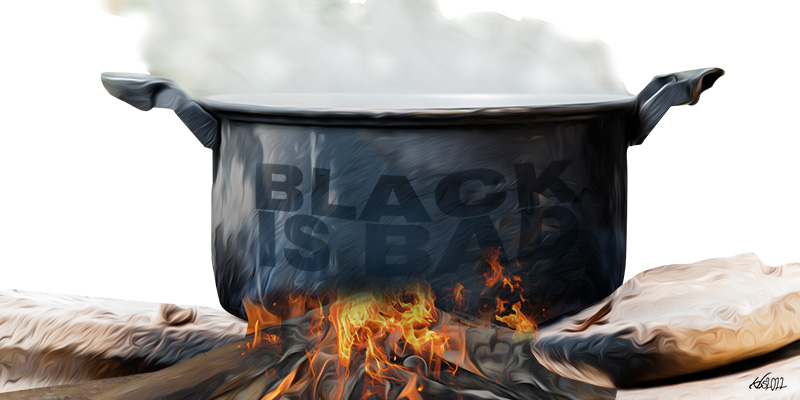The Democratic Republic of the Congo (DRC) is facing the worst Ebola outbreak in the history of this country. Nearly 400 people have died since August last year and the situation is only getting worse. Shortly after the elections last month, violence spiked, leading hundreds of refugees to flood bordering nations and many international health workers to withdraw from the country. Armed conflict threatened the safety of many healthcare professionals, forcing them to suspend their work and allowing the virus to spread. Once again, the government of the DRC answered to this crisis by shutting down the country’s Internet service, making things even worse.
But what is Ebola, and what’s the history behind this horrific disease? What are the numbers of the current outbreak and the risks for the neighbouring regions associated with this unmanaged crisis? How did the other African countries and the international community plan to deal with this humanitarian catastrophe?
What is Ebola and how does it work?
The Ebola Virus Disease (EVD) is a rare and often fatal haemorrhagic fever. An animal-borne illness, Ebola spreads in the human population through human-to-human transmission. Much less contagious than many people think, the infection occurs only through direct contact with bodily fluids or secretions (blood, urine, semen, stool, saliva) of a sick or recently dead person. A healthy person needs to come in contact with infected body fluids or contaminated items (such as syringes, bed linen or soiled clothing) for the virus to be able to get in through broken skin or mucous membranes (nose, eyes, mouth). Sexual contact with a diseased individual can also transmit the virus.
People who are most at risk during an outbreak are health workers, people who are in close contact with infected individuals (such as relatives, close friends, and spouses/partners), and mourners who have direct contact with bodies. For example, during the 2014-2015 West Africa outbreak, 74 per cent of transmissions occurred among family members.
The incubation period ranges from 2 to 21 days during which the individual is not contagious. Early symptoms (dry phase) include intense weakness, sudden onset of high fever, joint and muscle pain, sore throat, headache, and stomach pain. As the virus spreads through the body, the host’s immune system is damaged, and other symptoms become manifest, including diarrhoea, skin rash, uncontrollable internal and external bleeding, and impaired liver and kidney function (wet phase). As the levels of blood-clotting cells drop, the patient may start bleeding from the mouth, eyes, ears, nose, and rectum.
People who are most at risk during an outbreak are health workers, people who are in close contact with infected individuals (such as relatives, close friends, and spouses/partners), and mourners who have direct contact with bodies. For example, during the 2014-2015 West Africa outbreak, 74 per cent of transmissions occurred among family members.
Currently, there’s still no official cure for Ebola, other than some experimental antiviral drugs that may stop the virus from replicating. Treatment is usually only supportive, and aimed at keeping the patient alive while his body fights the infection. Doctors manage the symptoms of Ebola with basic interventions to improve the chances of survival, such as providing intravenous fluids and electrolytes, administering oxygen therapy and medications to improve blood pressure and reduce fluid loss caused by vomit and diarrhoea. Patients can also receive blood transfusions and additional treatment to deal with secondary infections.
The average mortality rate associated with Ebola is slightly below 50 per cent. However, in some instances, fatality rates have reached up to 90 per cent in past outbreaks. Those who survive may experience several side effects during their long convalescence period, including weakness, vision and hearing impairment, and digestion problems. Survivors often face social stigma when they re-enter their communities.
The first outbreak
Ebola first appeared in 1976 when two consecutive outbreaks of fatal haemorrhagic fever occurred in South Sudan and in the Democratic Republic of the Congo (formerly Zaire), approximately within 850 km of each other. The latter outbreak occurred in Yambuku, near the Ebola River, which gave the virus its name. However, researchers found that the virus existed long before these recorded outbreaks occurred, suggesting that encroachment into forested areas and increased interaction with infected wildlife may have caused the initial epidemics.
The genus Ebolavirus is a group of viruses that include several subtypes, of which only four are known to cause disease in humans. The other forms can infect other animals such as pigs, apes and duikers. The four viruses that infect humans (Ebola, Taï Forest, Sudan, and Bundibugyo) also affect non-human primates such as chimpanzees, gorillas, and monkeys, and fruit bats of the Pteropodidae family that help spread the infection to the general population. In fact, bats carrying the virus are the most likely source that transmitted it to apes and humans. However, the main reason why the virus spread so quickly during the initial outbreaks was the lack of proper hygienic measures taken to contain the contagion. The Yambuku mission hospital was underequipped and understaffed, and nurses reportedly re-used the same five syringes for roughly half a thousand patients a day even if they were contaminated.
2014: Ebola becomes a global threat
On March 23, 2014, a new EVD epidemic started spreading from a rural region of southeastern Guinea after a young boy from a small village was infected by bats. More cases of fatal haemorrhagic diarrhoea occurred in that area as the virus kept spreading rapidly toward nearby urban areas. Within weeks, the contagion had reached the bordering countries of Sierra Leone and Liberia, and in just a few months the epidemic became global, marking the beginning of the largest Ebola epidemic in history.
As the virus reached the more densely populated urban centres, the situation started deteriorating rapidly, and the World Health Organization declared a Public Health Emergency of International Concern (PHEIC). EVD crossed the borders of the African continent, reaching other countries such as the United States, the United Kingdom, Italy, and Spain. The poor public health infrastructure vastly contributed to the inability of the local authorities to contain the outbreak. Scientists and public health officials had only a vague idea how the virus spread, and the local community was never educated on how to prevent contagion. Many prevailing traditional and cultural practices related to mourning and burial provided additional opportunities for transmission.
Eventually, a careful implementation of health policies and infection prevention and control practices at the national and global level allowed the international community to curb the epidemic. Community engagement was critical in controlling the outbreak, especially when local leaders assisted with prevention programmes and the adoption of safe burial practices. Liberia and Sierra Leone were declared Ebola-free in early 2016, two and a half years after the first case was discovered. The aftermath, however, was tremendous; 11,325 people out of a total of 28,639 confirmed cases lost their lives to the infection. To put things in perspective, there were 2,427 reported cases and 1,597 deaths in all other known cases and outbreaks of Ebola combined.
The outbreak had also a tremendous impact on the healthcare sector of the countries affected; there were 513 confirmed deaths of health workers reported in Guinea, Sierra Leone and Liberia. Sierra Leone and Liberia lost 7 per cent and 8 per cent of their doctors, nurses, and midwives to Ebola, respectively. The epidemic caused a total loss of $2.2 billion in the gross domestic product of the three countries, and their growth was stunted due to food security concerns that negatively affected agricultural exports and cross-border trade restrictions.
The role of conflict in Ebola epidemics
Currently the DRC is fighting another devastating Ebola outbreak. Since the first four patients tested positive for the Ebola virus on 1 August 2018, a total of 608 cases have been reported, with 368 deaths confirmed, a fatality rate of about 60 per cent. Despite the lessons learned during the last epidemic of 2014, the death count keeps rising every day. The virus has already started moving from the North Kivu province where it originated, and reached the neighbouring Ituri province. If the crisis is not contained quickly, the three bordering nations, Rwanda, Uganda, and South Sudan, are endangered as well.
Currently the DRC is fighting another devastating Ebola outbreak. Since the first four patients tested positive for the Ebola virus on 1 August 2018, a total of 608 cases have been reported, with 368 deaths confirmed, a fatality rate of about 60 per cent. Despite the lessons learned during the last epidemic of 2014, the death count keeps rising every day.
Since the first outbreak in 1976, 10 of the more than 30 known Ebola epidemics occurred in the DRC, the current one starting just weeks after the previous one was declared over. Congolese health officials have a lot of experience responding to Ebola cases in the DRC. But why is the second-largest Ebola outbreak in history ravaging a country which should be much more prepared than other countries? The answer is simple yet complicated at the same time. But it can be summed up in one word: conflict.
The history of the previous outbreak taught us all a very important lesson: that disorganisation is the most effective force to help the virus multiply and spread unobstructed. Anything that hinders treatment and prevention efforts places an unbearable burden on the already stressed health system, especially when hospitals and facilities must deal with the aggravated health problems associated with military conflict. War puts the civilian population under unnecessary distress, paving the way to what the WHO’s Deputy Director-General for Emergency Preparedness and Response already described as “the perfect storm”. A closer look at the data from the aftermath of the outbreak in Liberia and Sierra Leone shows how much the difficulties associated with local conflict can turn a tragedy into a catastrophe.
Liberia and Sierra Leone were already devastated by a decade of civil war that resulted in half a million deaths and over 200,000 refugees. Population displacement and military struggles increase the risk for an infectious disease to spread unhindered. Civilians may be forced to survive through marginal subsistence strategies when crops are collaterally or deliberately destroyed. This increases their vulnerability to disease. All the medications in the world are useless when the human body is already weak due to lack of food and water. Soldiers and armed groups, on the other hand, may face additional exposure during forced marches, advances, and reconnaissance missions in densely forested areas.
All the prevention and control strategies needed to contain an outbreak cannot be employed in a country facing the many challenges of an ongoing conflict. War brings insecurity, and when combatants keep carrying out deadly attacks on civilians, the entire country is paralysed and the body count keeps rising, exposing people to further contagion. Help from the international community must be temporarily halted, all crisis response strategies are slowed down to a crawl, and critical supplies end up being pinned down or seized by the military forces. Key communication channels may be hindered or severed when dictators or other governmental authorities try to muzzle dissidents by restricting freedom of speech.
The current situation in the DRC
Violence is rampant in the DRC right now, with rebel armed groups engaged in a constant state of warfare with government forces, and over a million refugees travelling out of the country. A lot of “red zones” are too dangerous for health responders to reach and help the infected. Mistrust is causing resistance among the local population who refuses experimental vaccines and take care of their sick relatives at home at a time when they’re most contagious. The constant state of uncertainty is causing widespread fear among the Congolese population, which is fleeing the country en masse, trying to cross the border towards the neighbouring Uganda. Many of these refugees will try to sneak through by avoiding patrols, and who knows how many of them could be infected?
Crooked politics and corruption are the norm, and the situation is very volatile. In December, the government of Joseph Kabila even resorted to using the Ebola epidemic as an excuse to disenfranchise a million voters and postpone the presidential election in the areas most affected by the disease. Protesters didn’t take this decision well, and took out their anger and frustration on the hotspot city of Beni, the site of one of the few Ebola-testing facilities available. During the riot, a few tents got burned. What’s worse, a few people panicked and fled the assessment centre. Some of them could be infected. Oh, and an epidemic of malaria has also likely broken in the region.
Crooked politics and corruption are the norm, and the situation is very volatile. In December, the government of Joseph Kabila even resorted to using the Ebola epidemic as an excuse to disenfranchise a million voters and postpone the presidential election in the areas most affected by the disease. Protesters didn’t take this decision well, and took out their anger and frustration on the hotspot city of Beni, the site of one of the few Ebola-testing facilities available.
Local politicians are also spreading abominable rumours that Ebola was created by the national government to exterminate the Nande population. They think that they’re boosting their popularity, but in their foolish madness they do not understand how much they’re endangering the lives of their own citizens (and of countless other people). People are now angry with health workers because they think these absurd rumours are true, and are unleashing their fury on the same persons who helped them in the beginning. Much of the international staff from the Centers for Disease Control and Prevention (CDC) had to be moved to more secure locations when their safety has been threatened. The DRC has been deprived of the fundamental help of highly-qualified professionals who have unmatched expertise dealing with Ebola.
Ebola as a political rather than just a medical problem
Does the international community care about Ebola? To some extent, yes, it does. After all, if this lethal disease is not confined within the borders of these African countries, it may become a threat to the other, richer, more industrialised countries. It may kill rich people, which is something that neither the CDC nor the United Nations want to even think about. But as long as Ebola keeps killing poor people, there’s no need to redouble their efforts. To put things in perspective, during the devastating crisis of 2014, Germany spent on Ebola less than half of what it spent on a single footbal stadium during the 2006 World Cup. Many of the promises made in the past have not been kept, and it’s no secret that most of the Western aid is nothing but charity – useful to appease an immense mass of hypocrites, but not to make the West African health system stronger, more efficient, or more organised.
The Western reaction to the contagion is, once again, a deeply colonial one. The more enlightened and civilized countries of the Old Continent (and the New one as well) are patronising impoverished African countries who keep paying the price of their own underdevelopment. This epidemic just confirms the underlying narrative engineered by centuries of oppressive politics – that this disease is the result of a “plagued” environment where even animals and the forces of nature carry some form of sickness – a sickness whose eradication is part of the “civilizing” mission of Western countries. Except morals are always set aside every time it becomes clear how this mission is just an excuse for the economic exploitation of peoples and lands. Who else if not the American tyre company Firestone helped Charles Taylor establish a cruel dictatorship in Liberia – a country where Ebola caused nearly 5,000 deaths? But hey, Firestone protected its own workes so well that it was commended by the WHO for its timely and well-organised response. Great job, indeed.
The Western reaction to the contagion is, once again, a deeply colonial one. The more enlightened and civilized countries of the Old Continent (and the New one as well) are patronising impoverished African countries who keep paying the price of their own underdevelopment. This epidemic just confirms the underlying narrative engineered by centuries of oppressive politics – that this disease is the result of a “plagued” environment where even animals and the forces of nature carry some form of sickness…
Drawing a line
The current Ebola crisis is an international one that goes well beyond the scope of the citizens of the DRC. Politics are a curtain behind which the Western countries hide their double standards about global security. Yet, they cannot deny their responsibility in shaping the country in its current form. After all, the history of the DRC is still deeply intertwined with its colonial past, and its current political instability and the disastrous conditions of its healthcare system are the most obvious consequences.
For the Congolese health officials and the international community to be successful at containing the epidemic, a vaccine or treatment may not be sufficient. Patients must be reached, they must accept the therapy, and the health facilities where they recover must survive the onslaught.
To prevent this “perfect storm” from becoming a true cataclysm, conflict must be stopped, and a more radical approach to rebuilding the DRC’s health infrastructure is needed. If this is not done, everybody will pay a steep price – because a virus doesn’t understand nor does it care about politics.








